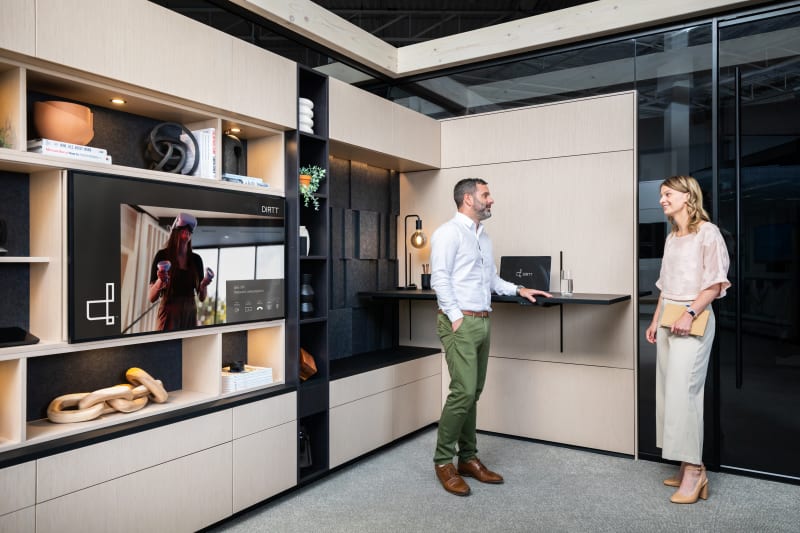How world-class homebuilder Minto used the pandemic to evolve their headquarters.
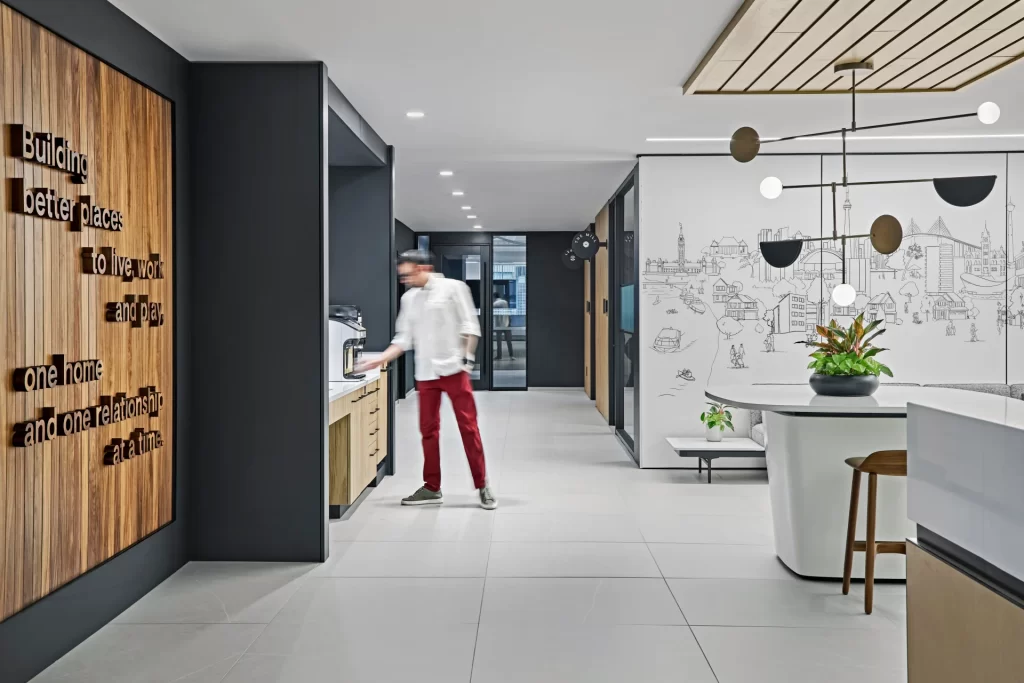
In the Maple boardroom at Minto’s headquarters sits a table dating to 1916 when it was first housed in the Railway Committee Room at Centre Block on Parliament Hill. The antique showpiece was acquired by the legendary real estate company back when it was an upstart family business more than 65 years ago. And yet it sits in the middle of their recently renovated and thoroughly modern office space in Ottawa.
Down the hall, in a room they call The Mill, there is a vintage image of the company founders at the sawmill they used in their homebuilding days.
Bringing the past and present together was at the heart of Minto’s office redesign. “Recognizing our roots while supporting a rapidly evolving workplace was important to us,” says JP St-Amand, Director of Health + Safety, Security, and Business Continuity at Minto. Could they create a space that supported a rapidly evolving workforce without sacrificing their history? “It turned out to be a perfect marriage,” says St-Amand.
Making the most of space and time
During the pandemic, Minto had an opportunity. Like many of us, their days were filled with back-to-back calls on Teams or Go-To Meetings and occupancy in the office was low because of the lock down. They wanted to take advantage of the empty space to modernize the offices and update their technology.
“The redesign offered us the opportunity to create a no-touch environment, upgrade our technology platform, and build a welcoming environment with interactive spaces for a hybrid workforce,” says St-Amand. This included a rightsizing of their office, utilizing a smaller footprint, and adding more gathering areas to encourage collaboration. With improved tech and more room to huddle, this would be a space that could engage people whether they were working in the office or joining remotely.
But of course, the clock was ticking. “We had a timeline and goal to complete the office redesign before employees returned to the workplace,” says St-Amand.
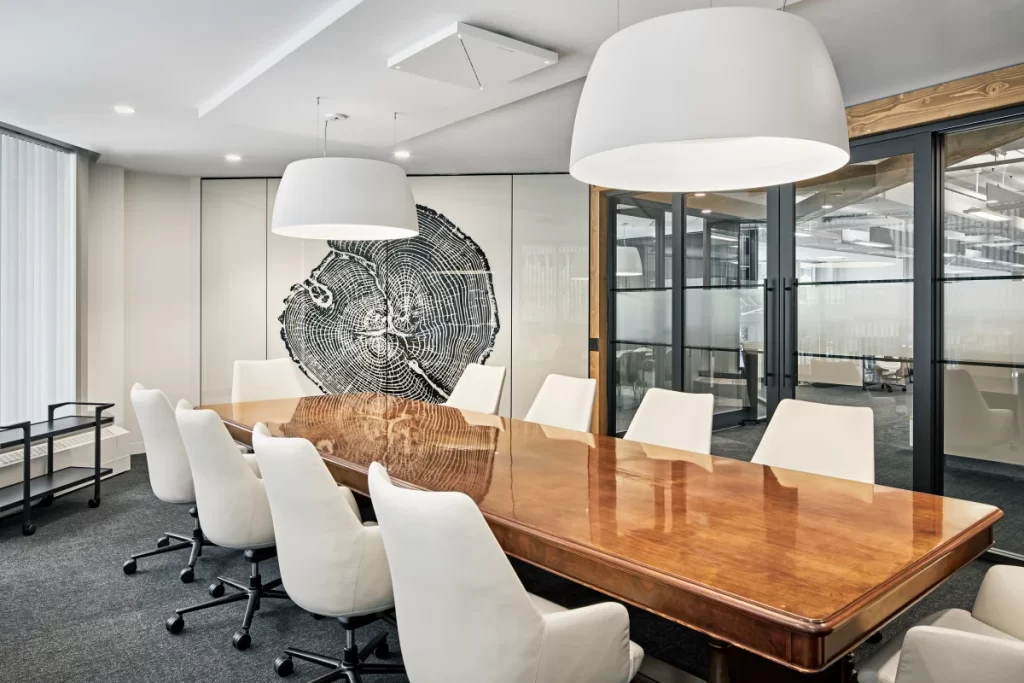
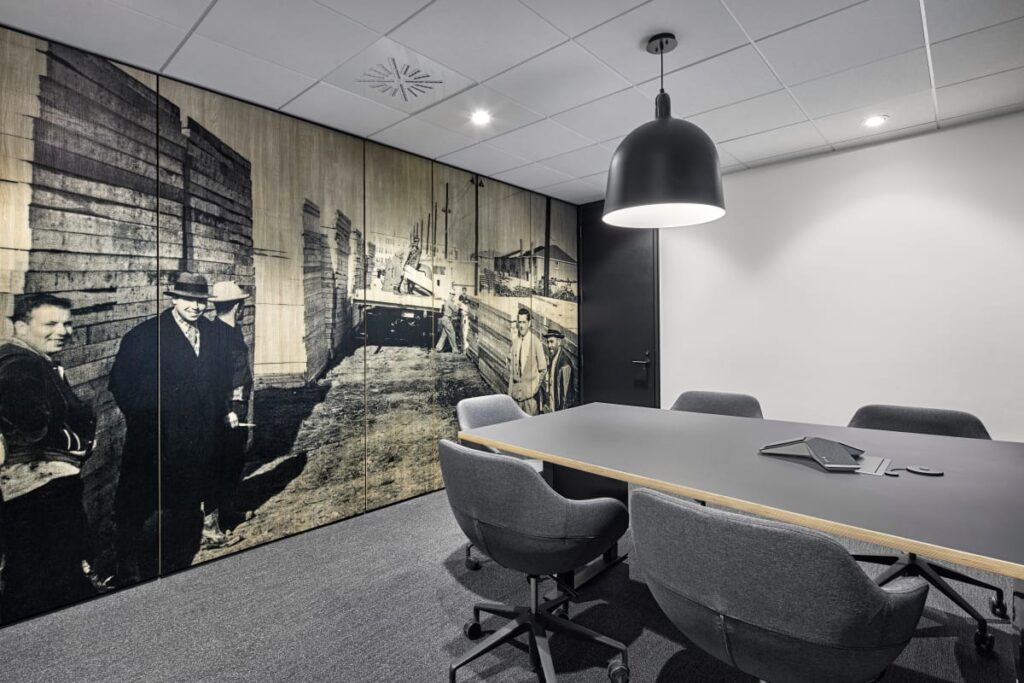
The speed of modular prefab
To get the team back into the office in time for the lifting of COVID restrictions, Minto looked to the DIRTT Construction System. They had used DIRTT in their Toronto office, so they understood that leveraging off-site construction could save them time. Construction sequencing is different with DIRTT as installation happens after base building, flooring, and ceilings are complete. This, combined with DIRTT overseeing multiple elements like walls, doors, casework, and timber, streamlined the process.
“Having a one-stop shop and a turnkey solution was attractive to us. Without the need to coordinate trades across multiple disciplines, we reduced the potential for any project delays.“
– JP ST-AMAND, DIRECTOR OF HEALTH + SAFETY, SECURITY, AND BUSINESS CONTINUITY AT MINTO
“Using DIRTT shortened the overall project schedule. Once the prep work was complete, our space was transformed with DIRTT walls up in a matter of weeks,” says St-Amand.
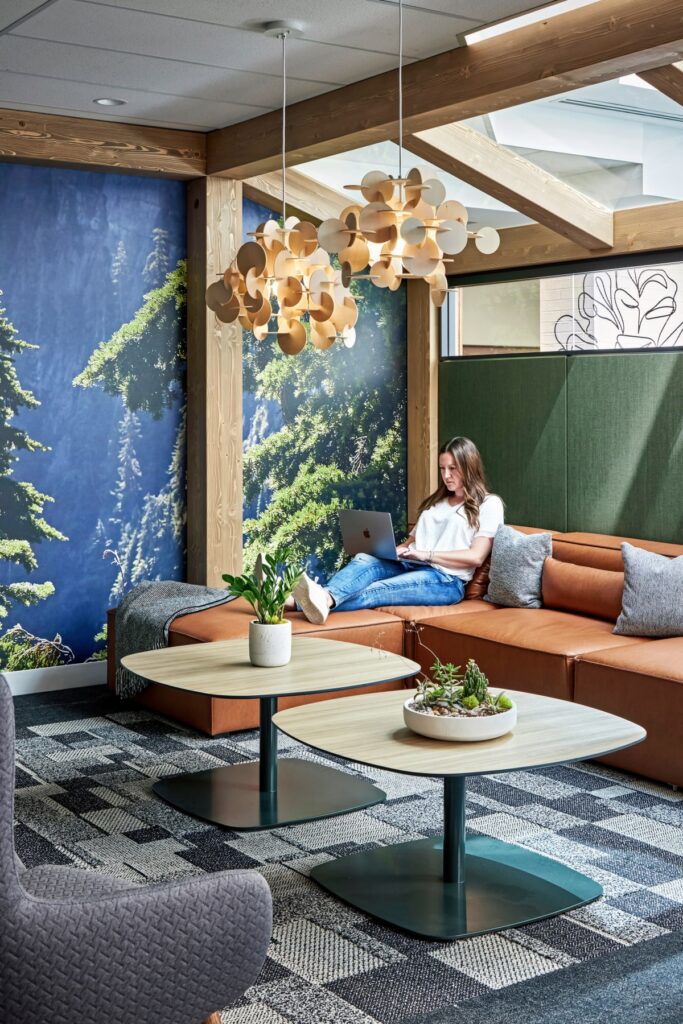
Ready to go
During the supply chain madness of COVID, DIRTT was able to mitigate some of the challenges by getting materials to site on time. Being ready to go kept the project on schedule, helping to make up time delays caused by COVID shutdown restrictions.
“The DIRTT system was on stand-by to install when POI Business Interiors, our construction partner, gave us the green light,” says St-Amand. “With the DIRTT materials ready to go, we could accelerate some key elements of our project.”
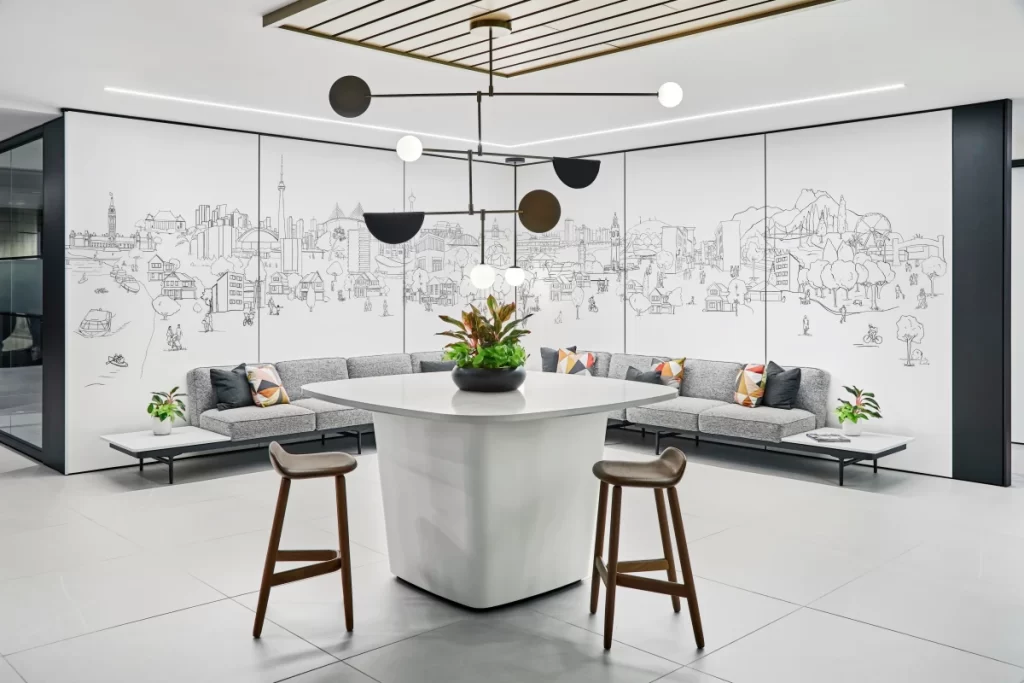
Supporting multiple work styles
The Ottawa HQ offered Minto a chance to learn from their Toronto project. That meant creating meeting spaces that empowered those who were working from home to engage just as much as those in the office space. Using embedded technology gave them this power while elegantly concealing wiring and equipment in the wall for a clean look. Adding writable surfaces gave the walls more versatility. Planning sessions could be executed, and ideas could be brainstormed right on the walls.
“Given the flexibility and unique features of each meeting space, employees can leverage the full potential to work together,” says St-Amand.
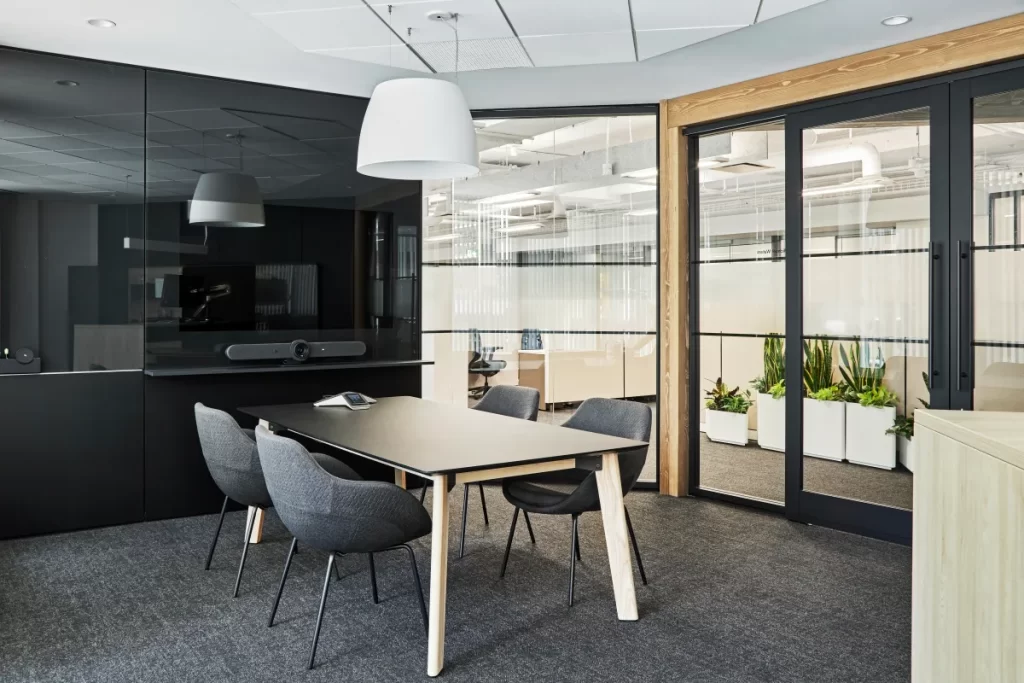
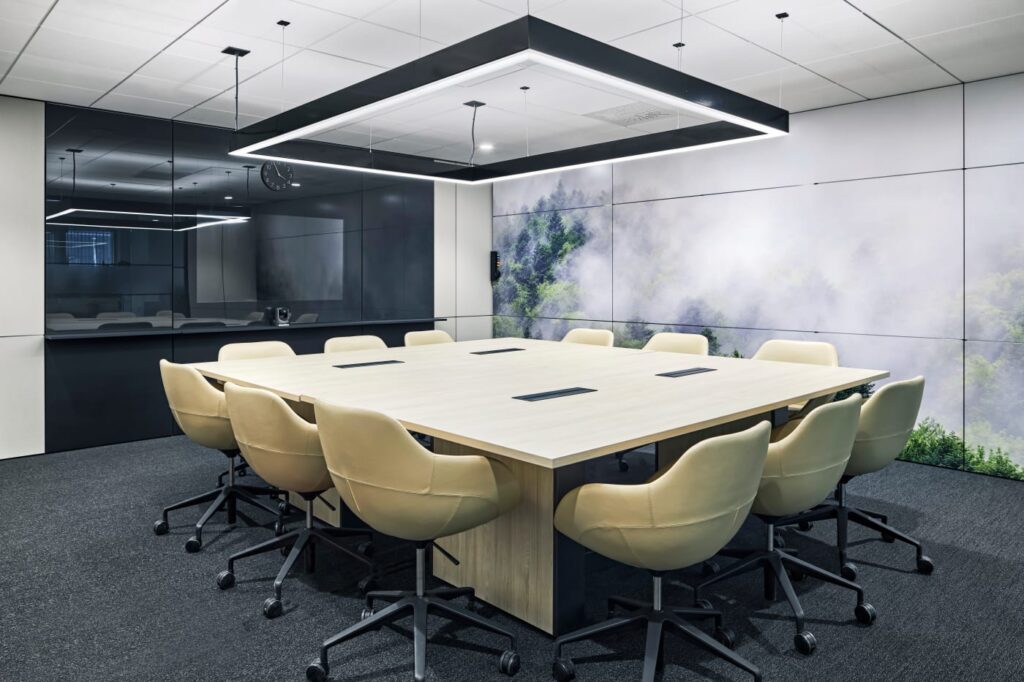
Supporting the brand
Minto is a long-time home builder, and that’s referenced in the stylized tree emblem in their logo. Because of that, incorporating wood and wood imagery was key. “Our remodeled space was inspired by the tree in our logo. Symbolizing the past, present, and future, it was a natural jumping-off point when naming our meeting rooms,” says St-Amand. “Paired with a wood grain finish on the DIRTT product, the space reflects our raison d’etre as a home builder.”
“The quality of a product and its finish were important to us. By integrating the DIRTT timber frame into our office environment, we could reflect our existence as a home builder within an engaging and welcoming space.”
– JP ST-AMAND, DIRECTOR OF HEALTH + SAFETY, SECURITY, AND BUSINESS CONTINUITY AT MINTO
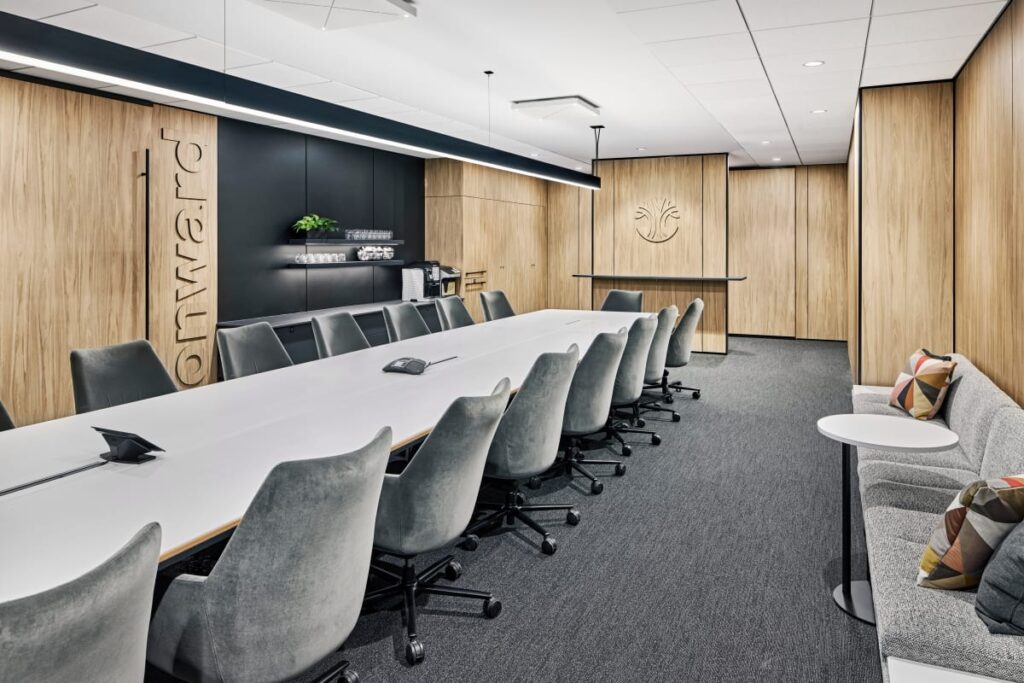
A sound decision
The other thing they learned from building in Toronto had to do with acoustics. Noise bleed in that location had traditionally been a problem. The volume of sound created by the HVAC system prevented clear communication whether you were in the space or calling in remotely. Minto looked to the DIRTT door system to help solve the problem. “The sound attenuation was quite attractive to us,” says St-Amand.
“It’s a smart system with door mechanisms that offer a perfect seal,” he says. “We required an element of privacy and the DIRTT product addressed that which was fabulous.”
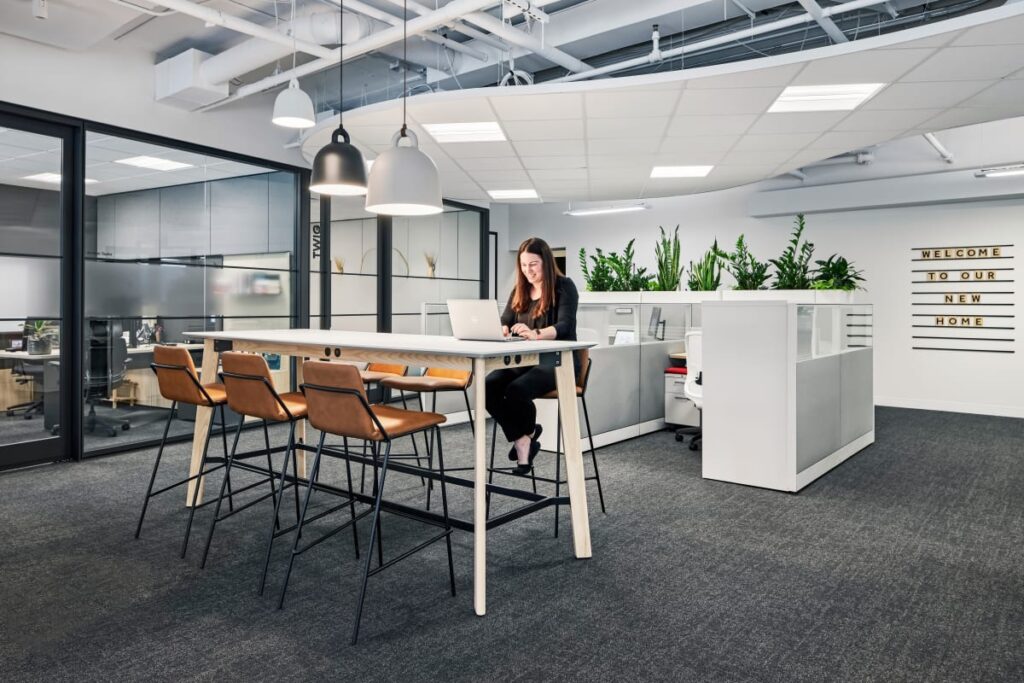
A better place to work
Now that the space is complete, St-Amand can see that hard work paid off. Employees are back in the office. Large gatherings, informal meetings, casual hangouts – they’re using the space. And from the brand elements to the acoustics, it was all achieved without an adjustment to the budget.
“We looked for cost savings at time when the price of construction materials were on the rise,” says St-Amand. “With the prefab DIRTT system, we stayed on track from a timeline and cost perspective. So, we paid for what we were quoted without the cost creep that can sometimes be associated with conventional materials,” says St-Amand.
